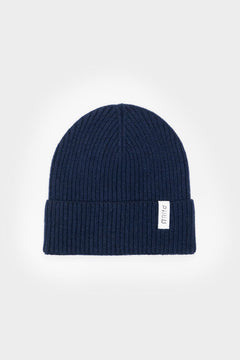Winter is coming. This means making space in our closets for the warmest apparels, such as the heaviest sweaters.
Concerning the sustainability we should ban all the artificial fibers, which are not biodegradable and unsustainable for our planet.
In this article we will speak of wool instead, and more precisely about cashmere wool, one of the finest yarns in the clothing industry, being the most insulating natural fiber in the world and also the softest. But are we sure that as a natural fiber it is also sustainable?
Let's start from an assumption: cashmere is an investment. A sweater woven with this yarn will last decades and you can give it to your children. So from the point of view of its duration it certainly represents one of the most sustainable items of clothing we can imagine.
But as with all fibers, it is necessary to take a step back and think about its production to understand its impact on the environment.

Why virgin cashmere is unsustainable?
You should know that cashmere is obtained by combing a particular type of goat, the Hiracus goat, from the region of Kashmir, the northernmost state of India.
This type of region has very long winters (even 6 months) that subject the animal to a very cold and rigid climate, with temperatures that are around -40 degrees Celsius.
The animal, to protect itself from this cold, being poor in protective fat, develops a very soft and fluffy undercoat, the duvet, from which cashmere is made.
As you can imagine, given the very small production of the undercoat compared to the outer pile, cashmere has an environmental impact much greater than wool: to make a cashmere sweater you need 4 goats that produce between 100 and 200 grams of cashmere each, while from a single sheep it is possible to obtain 5 wool sweaters.

Evolution of cashmere in centuries
Cashmere was introduced in Europe in the XIV century, thanks to Marco Polo, but it was only in the XIX century that Europeans began working on it.
The first countries to treat these fibers were Italy and Scotland, which held the monopoly until a few decades ago.
With globalization, cashmere has become known throughout the world and this has led to a huge increase in demand, especially in recent years, becoming a great classic in the luxury market.
So many fashion brands have decided to include this fine fiber in their garment collections, and with the increase in demand, the production has been under pressure to reduce the costs of raw materials.
The processing has also changed: from very specific and accurate, it has taken on large-scale dimensions, which has done nothing but increase processing waste.
Today cashmere is produced in many more countries than in the past, such as Mongolia, Tibet, Iran and Afghanistan; while production from the Kashmir area is small. The very high demand also led the shepherds to increase exponentially the number of cattle in the herds, so that overpopulation is destroying the grasslands of the Asian highlands where these animals live. In fact, the goat eats the grass and the plants to the roots, preventing the flora from regenerating itself.
The United Nations Development Program has declared that 90% of Mongolia, for example, is composed of arid and fragile soils, with an high risk of desertification.
A risk also for the livestock
The increase in demand and the difficulty in managing several herds have led to a much more frequent fiber revenue process.
Often the combing takes place in late winter. This means subjecting the animal to a risk of survival, since it is deprived at the coldest time of the year of its primary defense weapon.
A further threat also comes from the climate change that has affected these regions with the dzud phenomenon: summers are characterized by months of drought followed by very cold, snowy and rigid winters, which put at risk the survival of the animal.

Goats aren't the only victims
The Altai Mountains, are the natural habitat of the snow leopard. This feline eats mainly the Siberian ibex which, due to the invasion of goats, migrates to less frequented and more prosperous places.
Unfortunately the feline does not the same and he is forced to predate domestic animals, exposing himself to innumerable dangers, such as poaching. This situation is putting in danger this predator, so much as to become one of the animals at risk of extinction.
Upcycled cashmere as a solution
Although a virgin cashmere garment can last over time, it is clear that its current production has a certain impact on the environment and cannot be defined as sustainable.
The best option seems to be upcycled cashmere, whose production process is part of circular fashion: giving new life to items already used or discarded.
In summary, the advantages of regenerated cashmere are a lot:
- Upcycled cashmere garments have an excellent fit.
- They isolate from the external environment and allow your body to maintain its temperature.
- Endless duration. This material becomes softer over the years and does not spoil with repeated washing.
- Breathable fabric. It absorbs sweat and moisture.
- Antistatic. It does not attract electromagnetic or electrostatic fields and therefore neither dust.
- Multiplicity and good color solidity.
- The cost of the raw material is cheaper compared to the virgin fiber, which allows lower prices even to the finished product.











